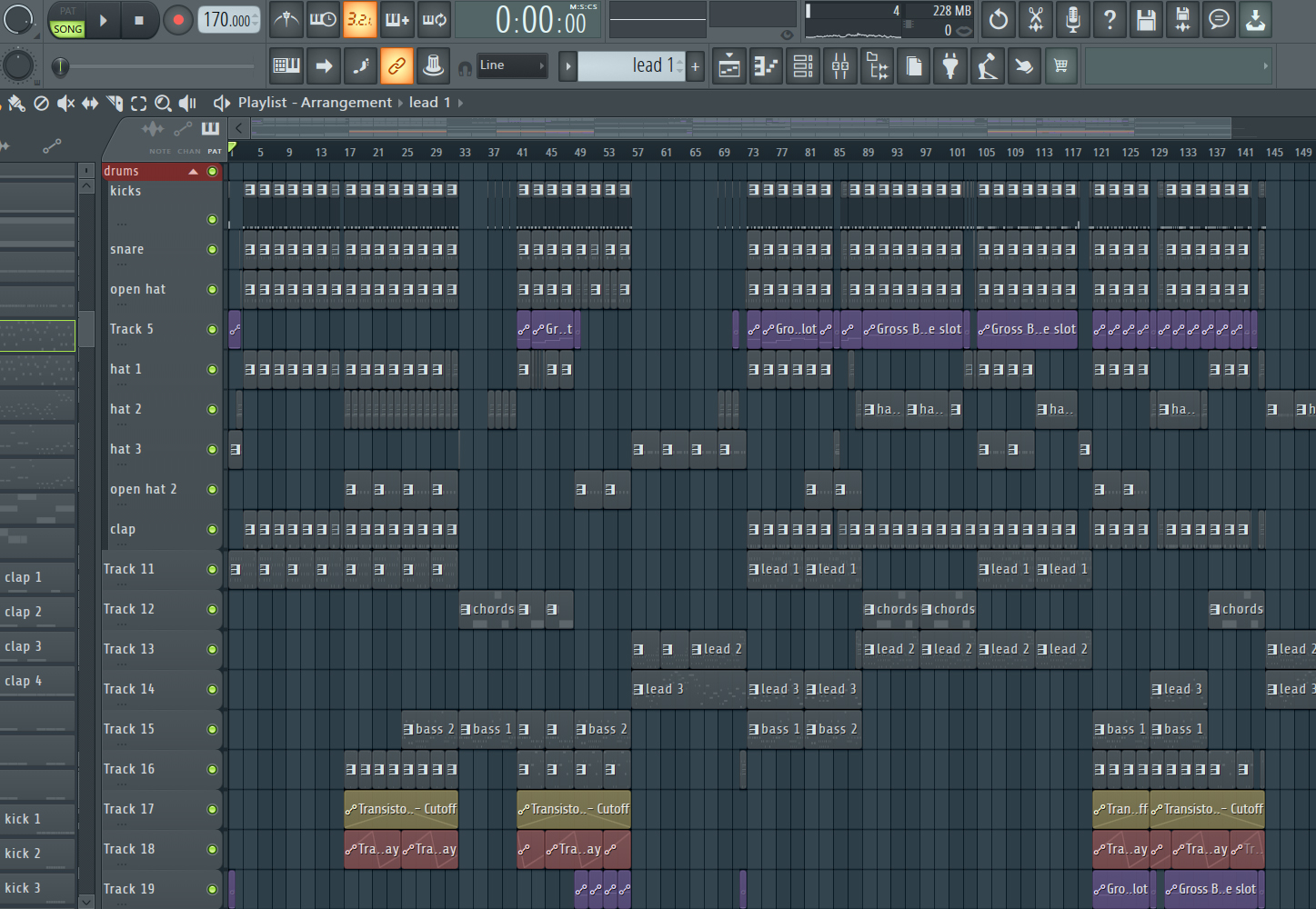
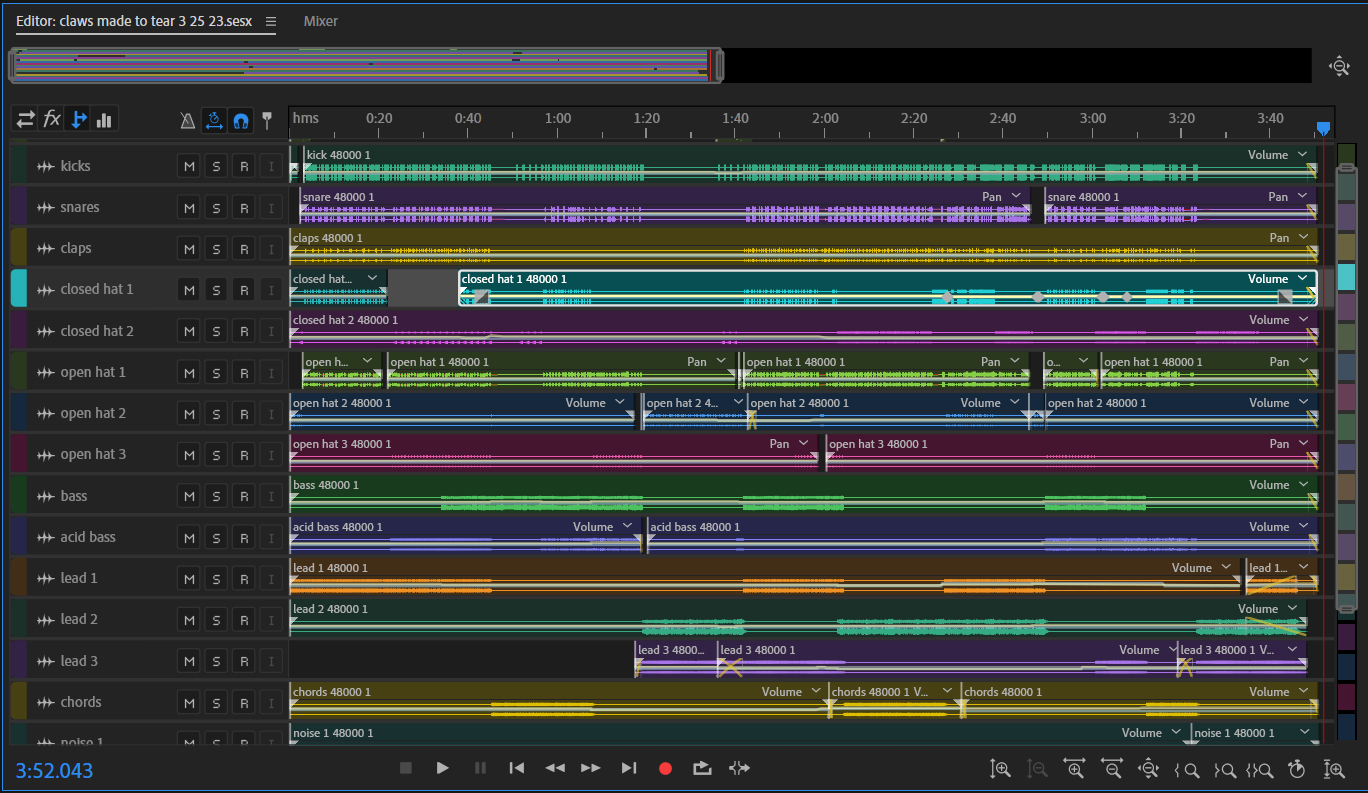
currently, my music kind of has two distinct "eras" to it. my earlier work, and what comprises my five albums on bandcamp, consists of sample-based material covering territories of mashups in albums such as melotrai and manifest concept and ambient material such as flowerhold and you're never going home. there can be some overlap between these categories.
following the release of my last album, manifest concept, i've since began making original works that i generally just classify as electronic. i have some difficulty in categorizing my original work not because i truly believe i am making outsider art beyond categorization, but because i'm not very savvy with distinguishing subgenres of broader classifications and because i'm never really actively considerate of what kind of genre i want any single track to fit into or follow the conventions of. i can really only be certain in saying that some of my tracks could definitely be labelled as ambient. beyond that, i will let others be the judge of this.
the majority of my plunderphonics work, specifically from flowerhold to you're never going home, was made with, believe it or not, sony vegas. i had no knowledge at the time of what a DAW was or what qualifies as one, but vegas offered enough effects to mess around with and the option to export audio files, so that was somehow good enough for me. manifest concept, however, was made using adobe audition, which is still probably not an ideal tool for composing music, and it's adobe so of course i feel bad for using it, but i guess it was still good enough for sample-based music.
nowadays, i use a combination of FL studio 20 and audition to make stuff; i actually write and arrange stuff in FL but i reserve audition for mixing and mastering for the most part. i do not like how FL just makes everything sound really compressed and i'm not aware of a way to fix this, but mixing all the individual stems in audition does the job for me.


claws made to tear in fl studio and in adobe audition
nearly all of the synths in my tracks are done using a freeware third-party plugin called synth1. i would not call myself a master of it but by now i am capable of designing my own synths to use in my tracks instead of relying almost entirely on other people's presets, which can still get you pretty far. it seemed intimidating at first, but it's actually very intuitive and using it has basically taught me all the ins and outs of subtractive synthesis.
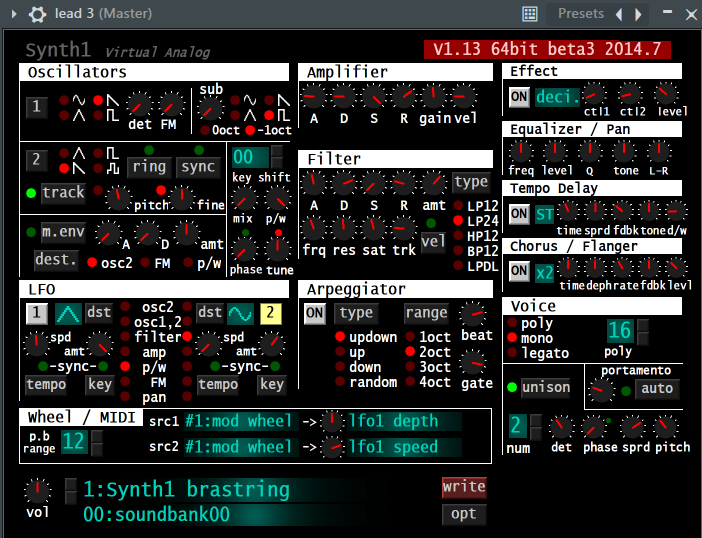
a patch for one of the lead synths in claws made to tear
more recently, i've started to use transistor bass in some of my projects. it's a first-party FL plugin based on roland's tb-303 and i've heard a lot of acclaim for it sounding really close to the original. it was a bit weird figuring it out at first and i didn't immediately realize there's an option to disable the built-in sequencer but i would say i got it working pretty quickly as soon as i started trying to use it.
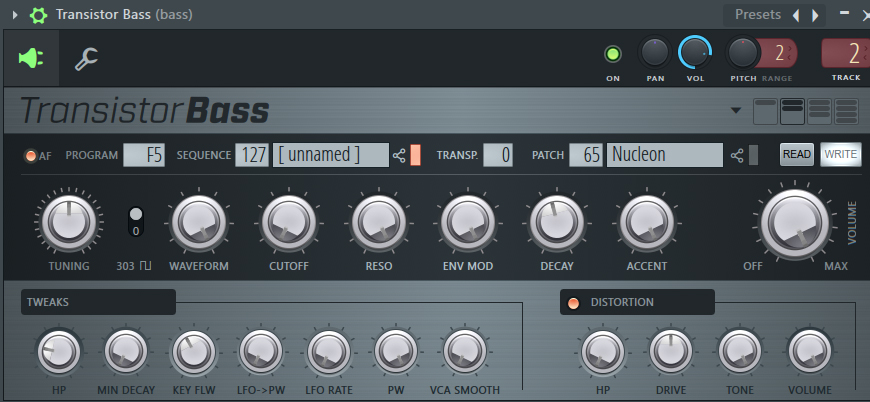
transistor bass, as heard in rippled solvic
aside from synths, i also use soundfonts every once in a while. i don't have the 64-bit version of fruity soundfont player so i just use directwave; it seems to have some issues with taking up a lot of file space but it does offer a lot of control over the sound which is very nice.
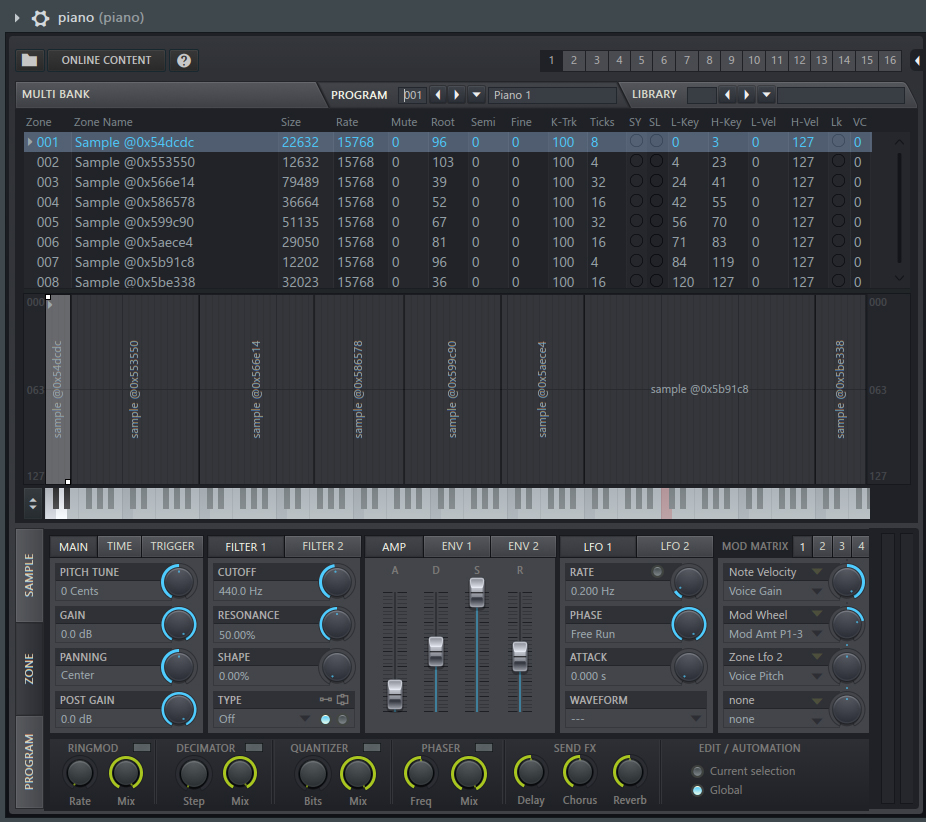
some of the soundfonts i use include SGM, earthbound, mother 3, warioware DIY, mario paint, ocarina of time, majora's mask, and paper mario. i also have a few that i've made myself from other samples.
for drums, i tend to just use samples and/or preset-based plugins. my dad gave me a giant folder, roughly 1.4 GB in size, full of all kinds of breakbeats and isolated samples that i tend to plunder for drum sounds that i load into slicex or fruity slicer. i tend to prefer sampling live drums, or just stuff that has a unique sort of texture to it.
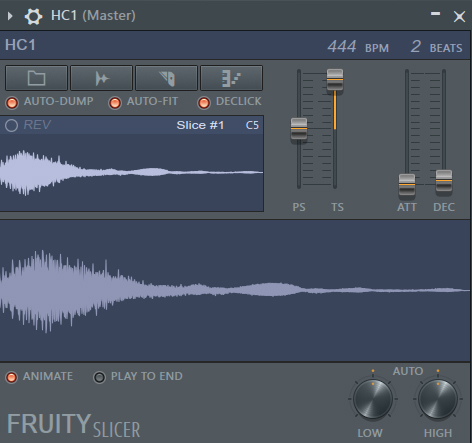
more recently, i've started using fruity drumsynth live, which has a bunch of presets that replicate the sounds of roland's tr-808 and tr-909 and are easily tweakable. i use a combination of both presets; i prefer the kicks, hats and crash cymbal of the 909 but also the clave, clap, maraca, rim, ride and especially the cowbell of the 808. the 808 kick can also be preferable if i'm going for a more artificial and heavy sound.
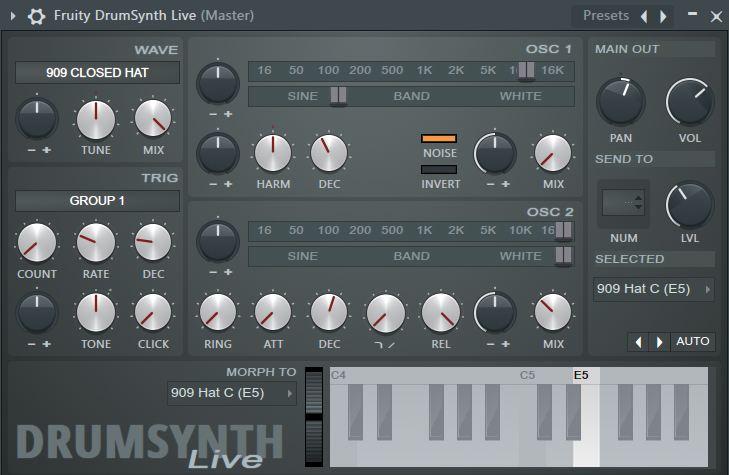
for effects, i tend to use some really basic ones such as fruit reverb 2 and parametric EQ 2, but i also have a few third-party plugins that i think are worth mentioning. cardinal is a free modular synth and effect plugin, but i've only used it for effects so far. i don't know much about how to really use modular equipment but i've managed to create some kind of interesting patches using a lot of LFO modules.
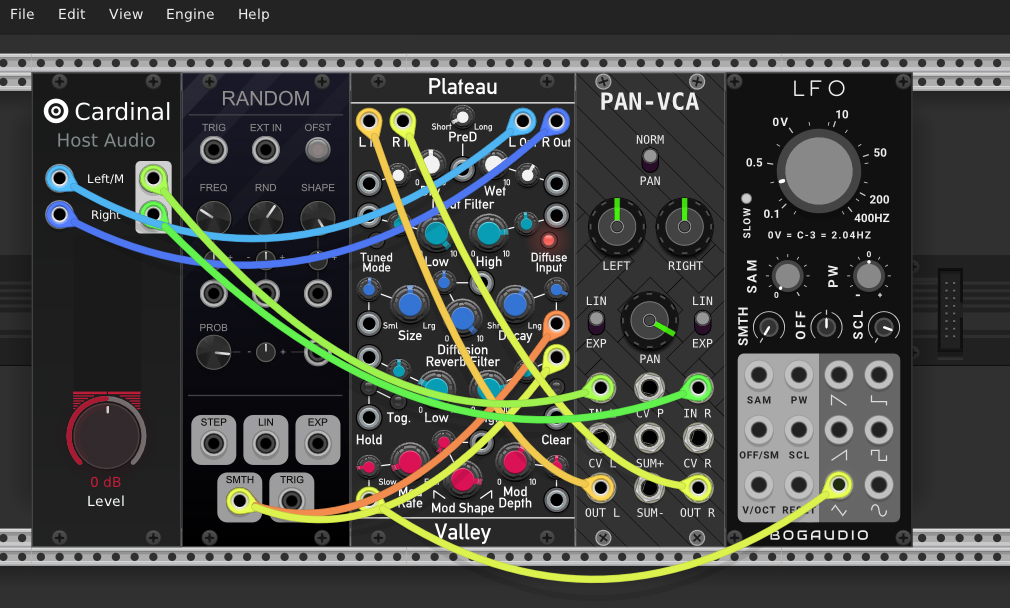
the plateau valley reverb module is especially a favorite of mine, very good for dense and wide-open reverb effects
another kind of interesting one is emergence, which is a sort of granular feedback generator that is good for extra saucy delays and echoes. it can play back samples of the input audio at varying speeds, pitches, volumes and even reverse the sound and can have up to four layers of delays, each with individually tweakable paramaters.
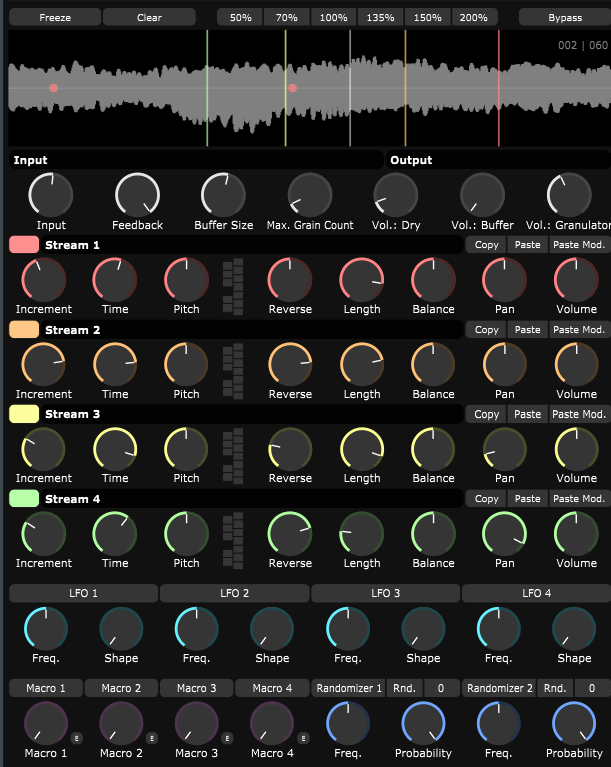
a patch used to create a thick sort of cloud of looping feedback for ambient stuff
i have a handful of physical devices for making this stuff; MIDI controllers for more easily playing piano rolls or recording MIDI, synthesizers because it's nice to have an actual instrument you can physically interact with, and an audio interface for recording said synthesizers.
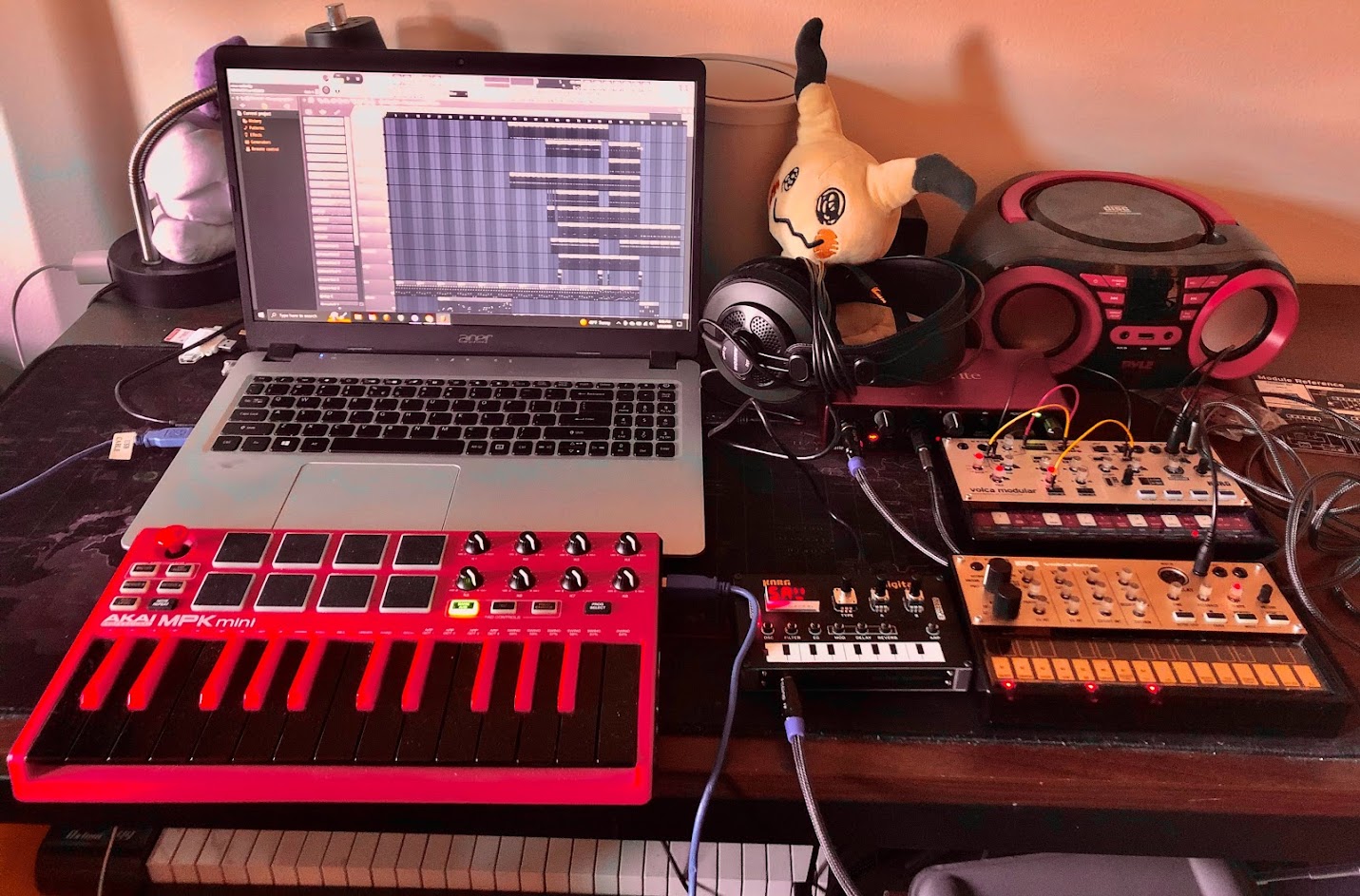
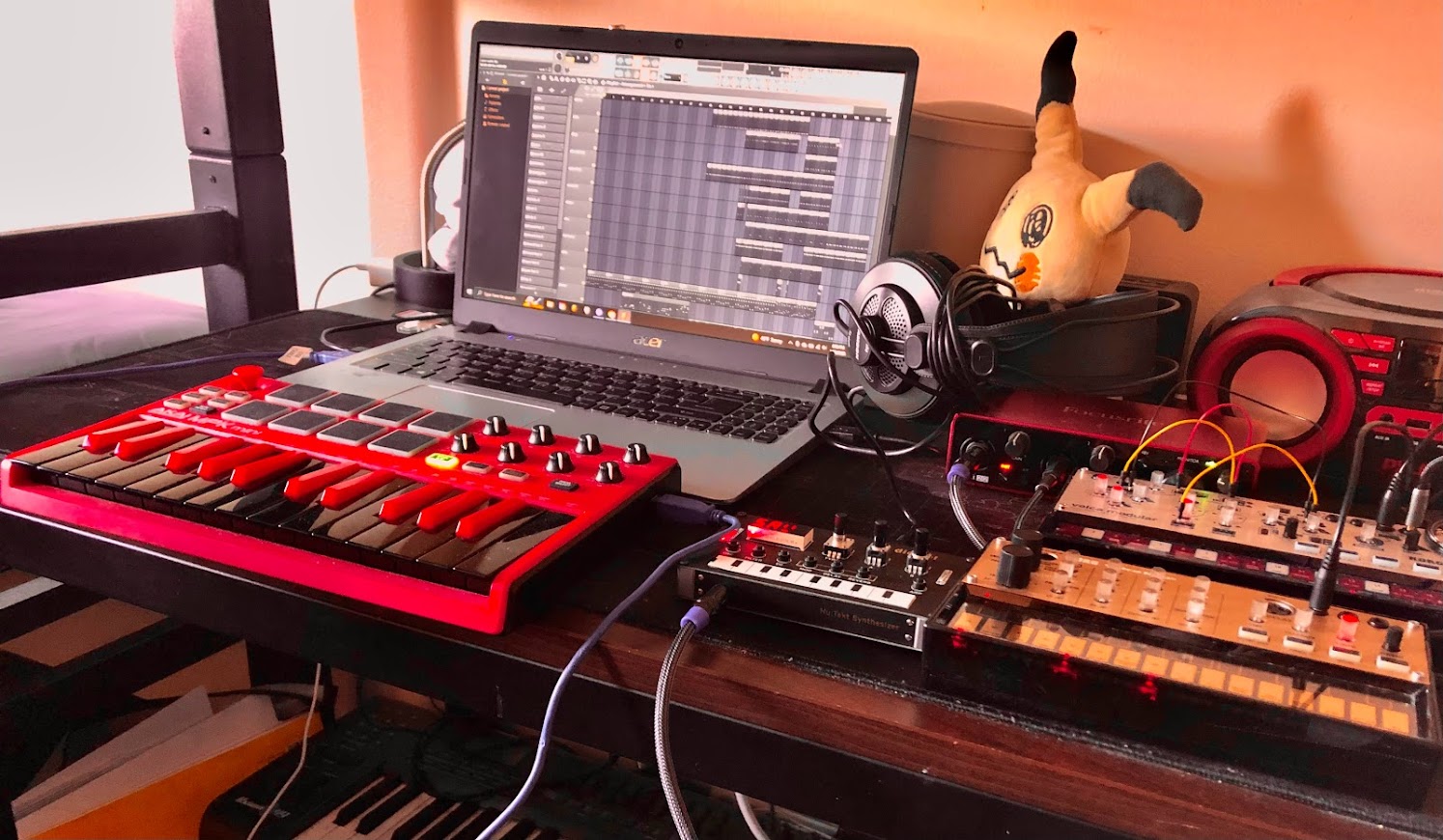
most of my equipment in one place. thankfully my desk is normally not this cluttered
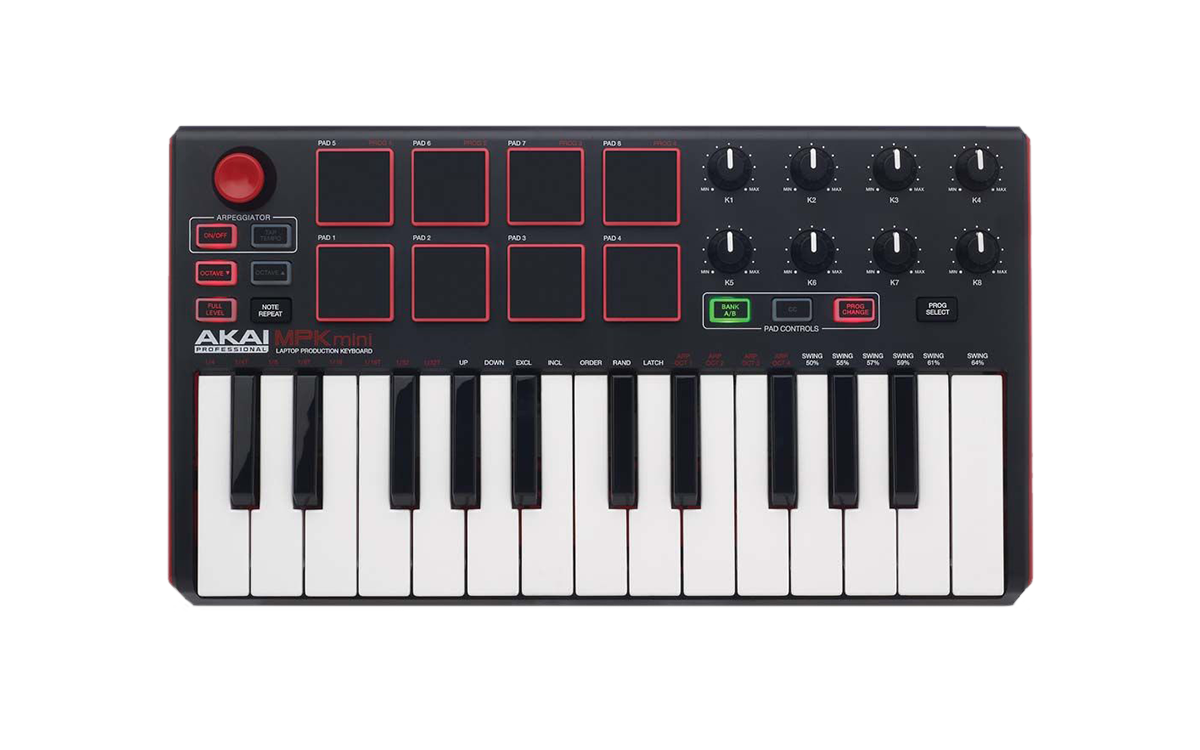
akai MPK mini mkII (i could not find any good images of my red version)
my current main MIDI controller. i originally got this somewhat blindly and because it was really cheap and i would now rather be using something else but it's still not all that bad. i guess the most i can say about it is that it works well enough and isn't not worth the price i paid for it (around $40-$50 or something). i kind of wish the keys didn't take so much pressure to push down compared to my other controller.
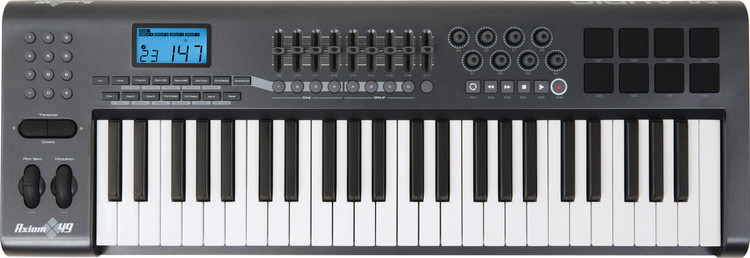
m-audio axiom 49 (first gen)
you may notice this just underneath my desk, because it's actually too big to fit on top of it. if i wasn't sharing a room with two other people with limited space i'd keep it on a keyboard stand somewhere else because i would definitely be using this as my main MIDI controller otherwise. i don't know how old this is but i got it from my dad as he wasn't using it and thought some keys were broken. as far as i can tell, all the keys and controls work, but i have had issues with it connecting to my hardware synthesizers, so it might be broken in some way.
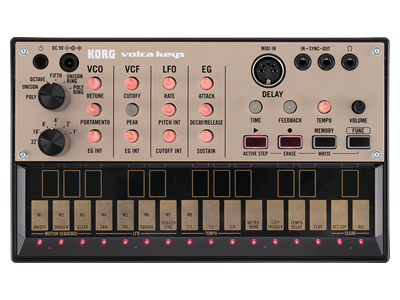
KORG volca keys
i have yet to release any tracks using this, but the volca keys is no less fun to play around with. it's an incredibly basic synth that isn't exceptionally versatile to my knowledge, but i do like the goofy and bright sounds it can make. i can also confirm from experience that, especially with external reverb effects, it is surprisingly good at droning ambient sounds. my main complaints with it are the limiting three note paraphony, the delay sounds kind of weird at times, and it gets alarmingly detuned very easily, although that might just be because i got mine used.

KORG volca modular
got this one more recently, the volca modular sounded horrible in concept when i first heard of it but i've been continually amused with some of the things it's capable of. it can be very difficult to figure out, but there are more than a few video tutorials out there demonstrating what it's capable of. some of the things i've been most impressed by include using the CV input to process external audio sources through it, converting the triangle wave oscillator into a square wave with pulsewidth controls, and being able to create a custom patch cable that can turn it into a light-controlled theremin. none of these have conventionally practical uses but they're pretty cool and i'm glad to be able to mess around with these. i just kind of wish that it didn't look like a bomb when you have all the patch cables sticking out of it. you can faintly hear this playing in the background of the track modullate, where it's playing a semi-randomized sequence and is patched so that the internal clock is constantly speeding up and slowing down.

KORG nu:tekt NTS-1
another one i just got around mid-february. this is a digital synth that is so bafflingly small it's kind of concerning, but it's surprisingly powerful despite its size. you also get to assemble it yourself which is kind of cool, like a LEGO set for people who are even bigger nerds than adult LEGO collectors. the built-in software is pretty solid on its own but i think anyone would agree that the ability to install third-party oscillators and effects is what really makes this such an appealling device. you can also process external audio through this and use it as a sort of universal effects rack. maybe you could call it a glorified VST, but it has the extra appeal of having physical buttons to press and knobs to twiddle with. my main complaint is that the key strip is almost completely useless, it is nearly impossible to actually play anything on it, and there's no sequencer, so without MIDI controls you basically have to count on using the arpeggiator to do anything with this. both the percussion and the distant arpeggios, also in modullate, were done using this.

focusrite scarlett 2i2 (3rd gen)
the audio interface i use for recording my synths into FL studio. not much to be said about it, the two inputs means i can't record all three synths at once but that isn't a huge problem. there's a reason it's often recommended as a beginner's audio interface.

samson SR850 headphones
the cheap studio headphones i currently use. i don't know if i'm qualified to call myself an "audiophile" but as far as i'm concerned i think these sound just fine. if anyone has better headphones or monitors then feel free to let me know if my production actually sounds good at all through those. the boosted high ends are kind of jarring at first but i've gotten more used to it. they are open-backed which means other people might hear what you're listening to and noise cancellation is completely out of the question, but they work just fine in quieter places.
if it's of interest to anyone, here's a list of some equipment that i want to get ahold of if i can ever afford to: